Seeing The World Through Salmon Eyes
11:59 minutes
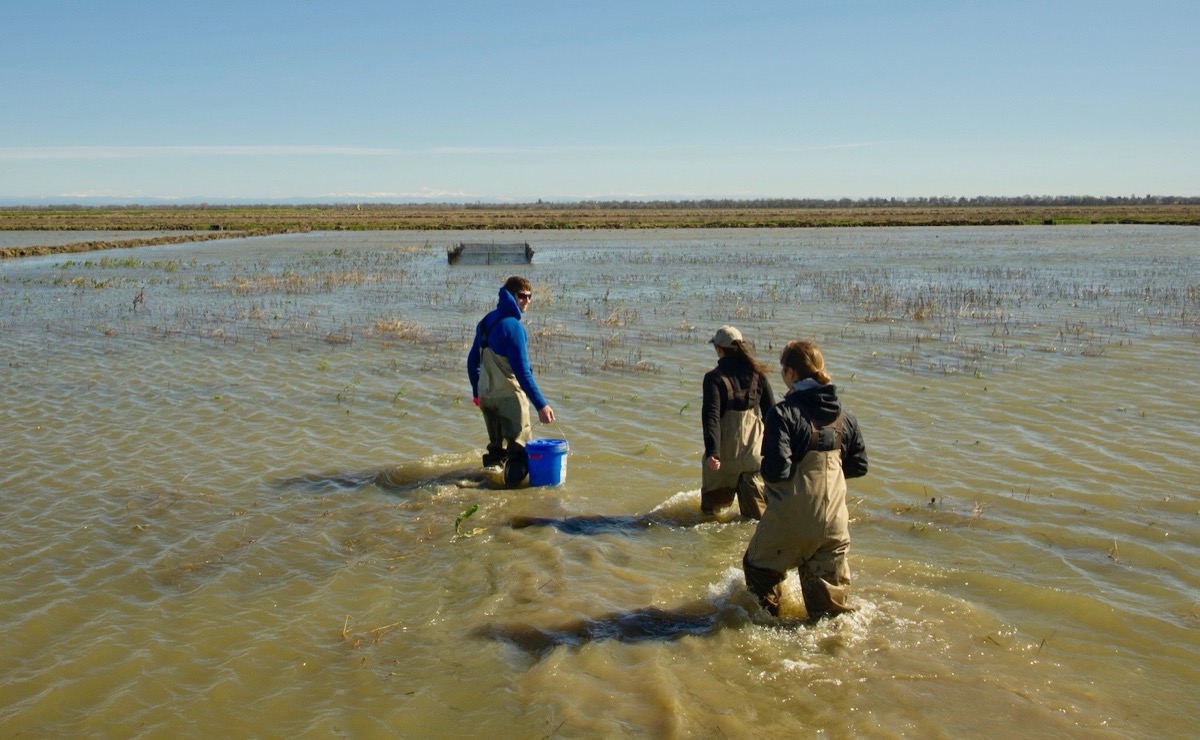
The saying goes, “The eyes are the window to the soul.” But for fish, the eyes are the window to the stomach.
As one California biologist recently learned, the eyes of Chinook salmon are like a tiny diet journal of everything it ate. But to read that journal, you have to peel back the layers of the eye, like it’s the world’s tiniest onion.
Miranda Tilcock, assistant research specialist at the Center for Watershed Science at the University of California, Davis talks to Ira about why she goes to such gooey lengths to understand what these salmon eat. Check out a video and photos of the lab’s research below!
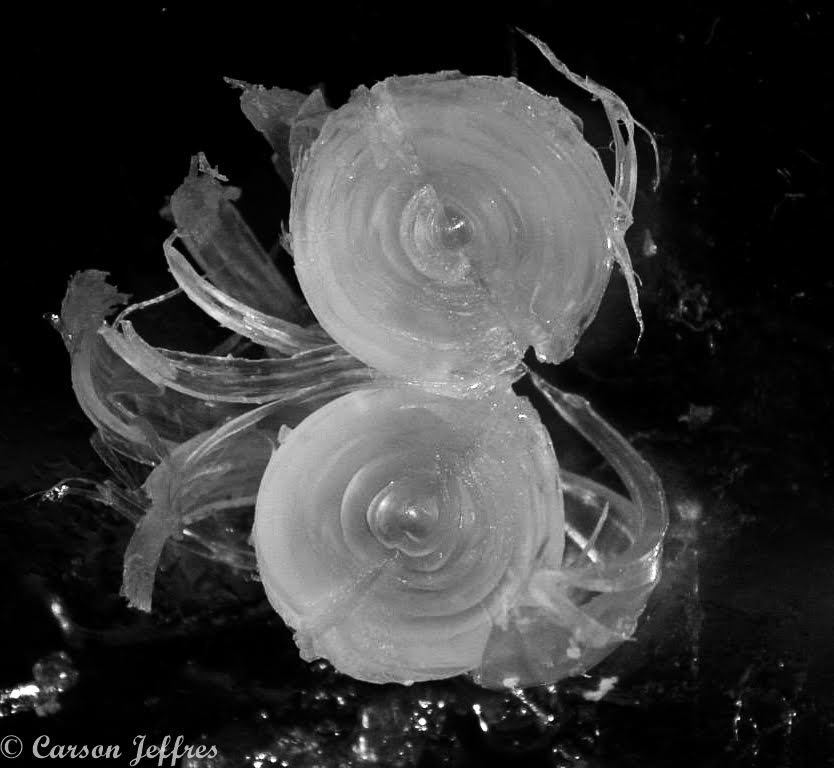
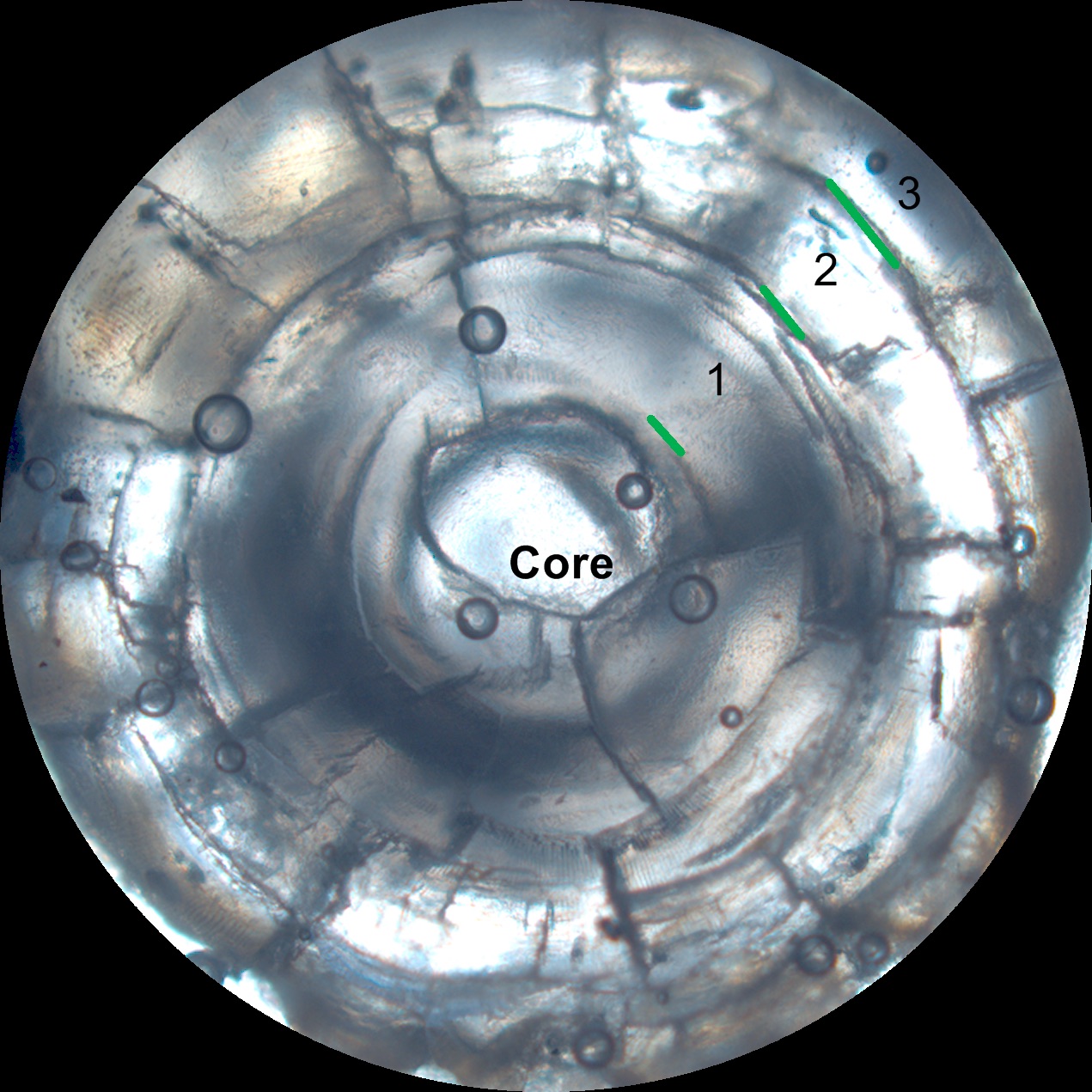
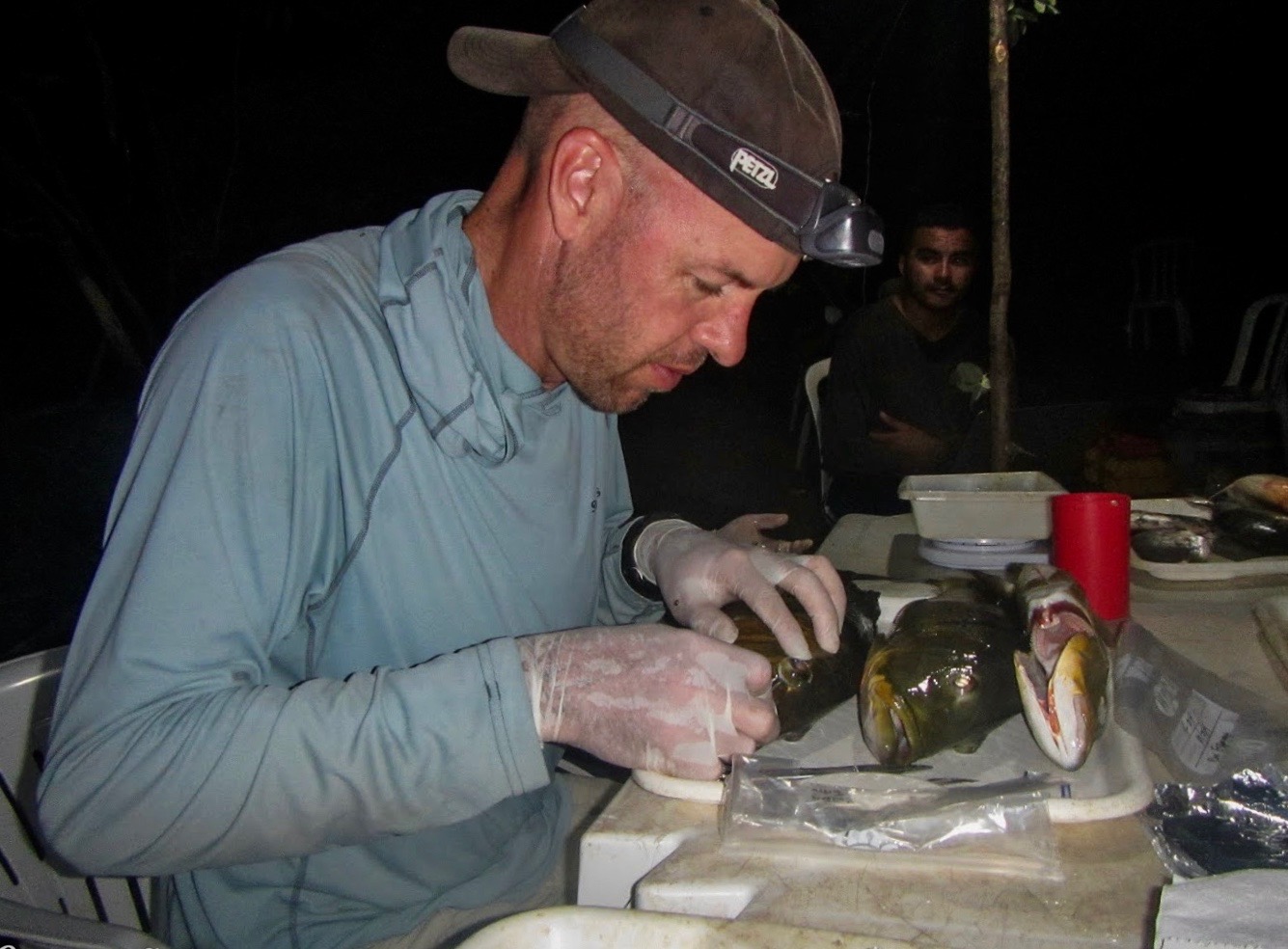
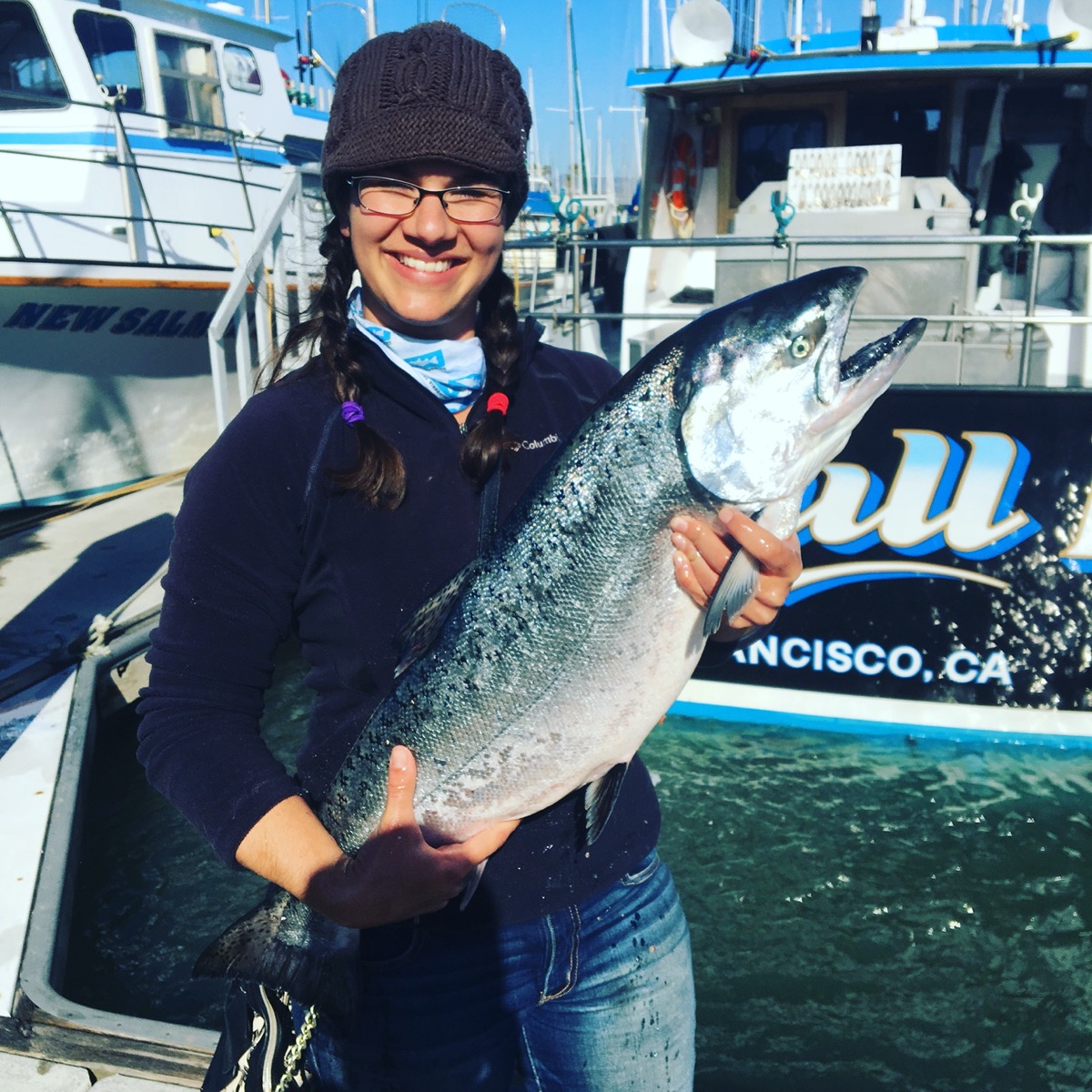
Invest in quality science journalism by making a donation to Science Friday.
Miranda Tilcock is an assistant research specialist in the Center for Watershed Sciences at the University of California, Davis in Davis, California.
IRA FLATOW: This is Science Friday. I’m Ira Flatow. If you’re the squeamish type, you might want to prepare yourself for this next conversation, because we’re going to talk about peeling eyeballs, fish eyeballs, that is. Because you know how they say the eyes are the window to the soul?
Well, for fish, the eyes are the window to the stomach. It turns out that fish eyes are, like, a little tiny diet journal of everything that creature ate. But to read that journal, you have to peel back the layers of the eye like it’s the world’s tiniest onion. But why would someone go to these lengths to understand what a fish ate?
We’ll have to ask my next guest, Miranda Tilcock, assistant research specialist at the Center for Watershed Science University of California at Davis. Welcome to Science Friday.
MIRANDA TILCOCK: Thank you for having me. That was a great introduction.
IRA FLATOW: So you can really do this? You can really peel a fish’s eye to find out what it ate?
MIRANDA TILCOCK: Exactly. So just like you said, they act as this amazing little diet journal. And they are composed of each of these individual layers. And each of these layers represent a different period in this fish’s life history. And what you can do is you can then put these pieces together to reconstruct their life to see what they were eating. And if you know what they’re eating, and if you understand the isotopes, these chemical fingerprints that are in our environment, then you can then make meaningful interpretations for these individual layers in a fish and better understand what they ate and, importantly, where were they eating that food.
IRA FLATOW: Well, I understand that you study the Chinook salmon in the California river system. Tell us about why you want to study what the salmon are eating there.
MIRANDA TILCOCK: Chinook salmon in California are extremely important to us here in the Pacific Northwest. They’re important culturally to the Indigenous populations here. They’re important economically. There is both a commercial and recreational fishery for these salmon because people like to eat them. They’re more commonly known as king salmon in the stores when you go to buy salmon.
They’re also really important ecologically. They bring a lot of marine-derived nutrients really far inland. But also, Chinook salmon play a role in our water supply here in California, which is always a really hot topic. If you have low population of salmon, that means that they can limit the amount of water that can be pulled from the river for agriculture and urban use. And so if you have a healthy population, this can lead to more sustainable water use for our ag and urban uses.
IRA FLATOW: Do you share what the fish ate? Do you share this data with other organizations or people who need to know?
MIRANDA TILCOCK: Absolutely. We work with many different organizations to better manage for salmon. And using the lens to study what a fish is eating and ultimately what habitat they’re using, this is really important for management and conservation. And this is something that the agencies here would like to know about. And so if we can have this tool in our toolbox to help better understand what a fish is doing individually, we can make better management actions and decisions on a population level to help increase these numbers of our salmon populations.
IRA FLATOW: I found it really wild that you study the lens of the fish to understand what it’s eating. How did you arrive at that?
MIRANDA TILCOCK: So we originally saw this amazing poster in Florida from a lab that was working on large marine species. And when we first saw that, my first thought for that was that this sounds too good to be true because at the time, I was trying to understand the isotopic values between these different food webs, the floodplain and the river, the two pathways that salmon are likely to take here in California before going to the ocean. And the fish that I was working on was significantly smaller than these marine fish.
I mean, we’re talking, like, three to four inches max for these juvenile salmon. And not only did we want to see if we can use this to reconstruct the life history for these juvenile fish, but also be able to use it for three isotopes instead of two– carbon, nitrogen, and sulfur. And so it was quite the long process of actually teaching myself this method, and understanding how it actually works, and adapting it for this much smaller fish here in California, and seeing if we can actually apply this on a much larger scale.
IRA FLATOW: Yeah, because I watched the video of a fish eye being peeled, and that looks like it took a while to learn.
MIRANDA TILCOCK: Yes. It was a long month with a very steep learning curve where I smashed a lot of eyeballs in that time trying to figure out how this actually works. And it became this balance between you don’t want the lens to be too wet, because if it’s too wet, you’re going to smash it, and the layers are going to smush together, and it’s not going to work.
But on the other side, if it gets too dry, one of two things end up happening. It becomes really brittle. It’ll actually shatter like glass, and your lens are going to be in hundreds of little pieces. Or you can actually shoot it off your tray like a tiny game of pool, and then the lens gets lost into oblivion somewhere in lab never to be seen again.
IRA FLATOW: Yeah, I hate it when that happens.
[LAUGHTER]
I found it fascinating that the eye has layers to it. Is that unique to fish that they have layers, that they’re like tree rings that grow another layer?
MIRANDA TILCOCK: Yeah, so, so far, I found it to only be unique to more of the aquatic species. It has been done in various cephalopods successfully. I’ve tried doing it in birds and frogs and was extremely unsuccessful. Their eyes are not the same. I have yet to try a mammal eye, but I hope to try someday once we can get back into lab.
IRA FLATOW: Speaking of eyes then, where do you get your eyeballs from? I don’t mean you personally, I mean for the work.
MIRANDA TILCOCK: [LAUGHS] We actually get our eyeballs from carcass surveys. So luckily for us when we study Chinook salmon, they spawn and they die. And we have agencies that go around and actually do population counts and estimates based on the number of carcasses in the river.
And then they’re very kind, and they pull tissues for scientists like me who might call them up and ask them, hey, can you also pull eyeballs from these fish so that I can look at their diets? And they take all that in stride, and they pull the eyeballs for me and put them in little film canisters, actually. And that’s how we store them in our freezer. And so they will send me hundreds of eyes every fall.
IRA FLATOW: Did you ever think when you started out in your career you’d be pulling fish eyeballs?
MIRANDA TILCOCK: Absolutely not. I think the scientist that was starting out five or six years ago would be absolutely shocked at what I’m doing now and wondering why would I do that to myself. They’re very smelly.
IRA FLATOW: When you get home from work, do people say, oh, you’ve been pulling fish eyeballs again, I can smell it?
MIRANDA TILCOCK: Yeah, my husband doesn’t like it if I have samples stored in the freezer at all before I take them to the lab. But I do notice that a lot of the dogs at my work suddenly started liking me a little bit more once I started doing fish eyes.
[LAUGHTER]
IRA FLATOW: Yeah, tell me a bit more about how the eye records what the salmon ate.
MIRANDA TILCOCK: Yeah, so the way the lens is growing, it starts off as this very small core that’s this little clear ball. And the layers are going to start to form around this ball. And this layer is forming and it’s actually going to be integrating the food that that fish is consuming at that period in their life. So when they’re first developing and they have that yolk sac, you can actually see in their lens that they have this really high ocean value in their eye, even though they’re living in fresh water.
But it’s because they have all that marine nutrients that their mom brought back for them. And so that actually integrates into that layer. And then the layer will then compress, and it’s no longer undergoing what’s called protein synthesis, meaning that it’s effectively locking in that isotopic value from that food web at that time in their life, and it’s not going to change, and it’s going to stay there permanently. And then that process just keeps happening as they move through their lives down the river or into the ocean recording the food web that they’re eating at that time.
IRA FLATOW: I also learned from watching you, I guess it was you in that video–
MIRANDA TILCOCK: It was.
IRA FLATOW: –peeling the lens, that we normally think of a lens being lens-shaped, sort of oval, but the lenses here look like they’re kind of round.
MIRANDA TILCOCK: Yeah, they’re like a little pearl right there in the eye. And so the process is not as gruesome as it sounds. It starts off gruesome, I will say that, where you have the eye, and you do have to cut open the eye to find the lens.
But hidden within that eye is this beautiful little pearl-like orb in there that you pull out. And then the gruesome bit’s over, and you’re left now with just this little tiny pearl onion that you can then start the peeling process on. And it no longer smells at that point either, which is also really nice.
IRA FLATOW: Does this tell you about whether any of the California salmon populations are endangered?
MIRANDA TILCOCK: This doesn’t tell us if they are endangered or not, but it does help us understand of whether or not how we’re managing a population, if we’re doing a good job or not, or if there is something that we need to change. And that’s something that we are currently working on with a project that we call the “Eyes and Ears” project, because we’re using both the eye lens and we’re using the fish otolith, or the ear bone, to better understand what habitats these fish are using.
And so the otolith can tell us what river a fish came from. And then the lens can tell us more about the habitats they’re using along that river. And so we’re ultimately hoping to better understand what we need to be doing in order to improve our management decisions and actions.
IRA FLATOW: Now, you say that the ear can do it too?
MIRANDA TILCOCK: Yeah, so the otolith, or the ear bone, has been used for decades looking at the water chemistry and being able to detail which river a fish has been in and which river they took on their way out to the ocean. And this is found just in the water chemistry, and it gets into the otolith, and you can actually retrace their migration route and map it out.
And here in California, we’re fortunate enough to have geologically different rivers, and so this gives us a really strong different chemical fingerprints in each of the river that we can actually be like OK, this salmon came from the American River, this one came from the Sacramento River, or this fish came from the Feather River. And then we know what habitats exist along those rivers, and we can then start beginning to relate the lens data to that with the food webs.
IRA FLATOW: So what do we know about the salmon runs from looking at these eyes?
MIRANDA TILCOCK: Well, the paper that has been recently published, this was more of a proof of concept for all the different applications that we’re hoping to use it for. So we’re hoping to eventually better understand those habitat needs that these fish have as juveniles and what freshwater habitats that they’re using. And we want to know which fish that came back, these successful spawners, ultimately what led to their success, what kind of environment did they experience in the fresh water, what kind of environment that they experience in the ocean, and what kind of food webs they were experiencing throughout their lives, and did that eventually lead to these long-term successful spawning migrations.
IRA FLATOW: So you can’t go fish shopping anymore and look at a fish in the eye lying in the ice and think about it the same way other people do.
MIRANDA TILCOCK: Absolutely not. I can’t. I’ve watched different Food Network shows, and I’ll see them cooking entire fish, and all I can see is the lens and the eye popping out. And all I can think of is that that’s cooking data. And those are missed opportunities.
IRA FLATOW: Thank you very much for taking time to be with us today, and good luck to you.
MIRANDA TILCOCK: Thank you. And thank you for having me. This has been wonderful.
IRA FLATOW: Miranda Tilcock, assistant research specialist at the Center for Watershed Science at the University of California at Davis.
Copyright © 2021 Science Friday Initiative. All rights reserved. Science Friday transcripts are produced on a tight deadline by 3Play Media. Fidelity to the original aired/published audio or video file might vary, and text might be updated or amended in the future. For the authoritative record of Science Friday’s programming, please visit the original aired/published recording. For terms of use and more information, visit our policies pages at http://www.sciencefriday.com/about/policies/
Katie Feather is a former SciFri producer and the proud mother of two cats, Charleigh and Sadie.
Ira Flatow is the host and executive producer of Science Friday. His green thumb has revived many an office plant at death’s door.